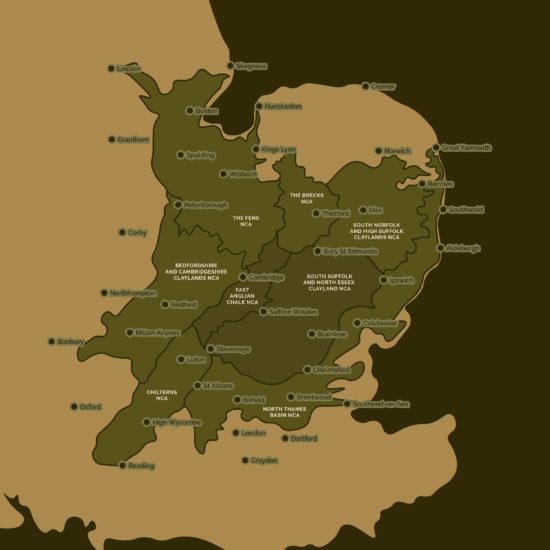How it works
With our expertise in sustainable land management and habitat restoration, we carefully oversee and maintain your biodiversity offset within our local projects over its 30+ year lifespan. True biodiversity enhancement involves implementing nature restoration on a scale that benefits our natural environment, providing long-term, trustworthy results.
Get in touch
1
Pre-Planning
At the developers site design stage a BNG assessment needs to be carried out by an ecologist.
We can suggest ecologists for this service if required.
Once the required BNG units have been calculated we will supply the developer with a BNG Proposal confirming to the LPA that the required BNG units have been sourced.
2
Planning
When the developer submits their planning application (in order to satisfy the new mandatory evidence of BNG offset under the Environment Act 2023), they will need to include a copy of our BNG Proposal to confirm the units have been identified.
Our service includes assistance in negotiations with the LPA to ensure your planning application meets the new legal requirements.
3
Post-Planning
Once planning permission has been granted the developer needs to complete the purchase of units.
We provide the developer with a Supply and Assurance Certificate to be submitted with their final Biodiversity Gain Plan (BGP).
The developer is then able to submit the final BGP to the LPA in order to fully satisfy and discharge the condition.
Species poor grassland becomes
Native wildflower meadow
Native mixed Scrub
Or mixed and broadleaf woodland.
Our detailed Habitat Management and Monitoring Plan included in the BGP sets out how we will then maintain the monitor the units for the 30 year term.
Local Planning Authorities & National Character Areas for BNG
View the maps below to see which geographic areas are covered by our service.
The areas covered in the maps above serve to give an indication of the regions supported by BNG Units. However we can also provide additional units outside of this area. Get in touch to find out more.
FAQs
Below you’ll find answers to some of the most commonly asked questions. Click on the questions below to find out more.
The Environment Act 2021, granted Royal Assent in November 2021, mandates that all forthcoming developments in England must ensure a minimum 10% net gain in biodiversity.
Implementation of this biodiversity enhancement requirement commenced on February 12th 2024, initially targeting larger sites and small sites from April 2024. For significant on-site gains and all off-site gains, the BNG must be maintained for a minimum of 30 years with responsibilities set out in legal agreements.
The Environment Act will contribute to halting and potentially reversing the alarming decline in biodiversity across England. By making biodiversity a central concern for property developers nationwide, it aims to address this pressing issue comprehensively.
A BNG unit represents a designated area of land aimed at enhancing biodiversity. Typically, these units are established on low-productivity land, which can be transformed into diverse habitats such as species-rich grassland, woodland, wetland, mixed scrub, or wilding sites.
The numerical assessment of a BNG Unit is undertaken by qualified ecologists and considers factors such as its type, uniqueness, condition, and location.
On-site BNG entails fulfilling the new requirements and achieving a 10% biodiversity net gain within the red line boundary of the development site and implementing a management plan for a minimum 30 year period.
While this approach should be considered first, it may not always be feasible without sacrificing developable space and with the associated obligations of managing the BNG for such an extended period.
Off-site BNG requires developers to purchase their required BNG units from a Biodiversity Gain Site. Therefore, mitigating biodiversity loss off-site becomes preferable. BNG Units Limited offers a simple, comprehensive solution to deliver all of your off-site requirements.
From an ecological standpoint, purchasing off-site from a Biodiversity Gain Site offers distinct advantages.
Working off-site, especially by connecting multiple biodiversity sites to form larger habitats or stepping stones, promotes greater species diversity and resilience.
On-site efforts often result in habitats and species that predominantly favour areas with human activity.
We anticipate that most developers will have already determined their off-site BNG needs using the statutory Biodiversity Metric Calculations, thus knowing precisely the type and number of units required. All we need is the unit requirement and the location of the proposed development to swiftly proceed.
However, should it be required, we have a network of ecologists who can carry out an on-site survey to calculate your BNG requirements and work with us to deliver them as quickly and efficiently as possible.
What is the Statutory Biodiversity Metric?
The Biodiversity Metric calculation tool, developed by The Department for Environment, Food and Rural Affairs (DEFRA), serves as a crucial tool for assessing the fulfilment of mandatory BNG for new developments in England. This system evaluates various habitat types based on their relative importance to wildlife and quantifies biodiversity losses and gains associated with developments.
Prior to submitting a planning application developers need to show the required BNG units for their site have been identified. As we already have a Section 106 legal agreement with the LPA we can provide this for the developer wit ha BNG Proposal which can be submitted with the planning application.
BNG units then need to be purchased following planning approval but prior to commencement of any work on site.
When you purchase the required units from us we will provide you with a ‘Supply and Assurance Certificate’ to submit with your Biodiversity Gain Plan.
We can make this process simple and straightforward allowing the developer to concentrate on their project.
The Supply and Assurance certificate is a legal contract between us (BNG Units Limited) and the developer, the cost for which is included in the price that you pay for your units. This document sets out our commitment to create, enhance, maintain and monitor the habitat on your behalf for the required 30 year period. The developer can then use this document to submit with their Biodiversity Gain Plan and discharge the condition.
As stipulated by the Environment Act 2021, all land mandated to achieve BNG must submit a HMMP for approval by the local planning authority together with a Biodiversity Gain Plan.
This sets out how the habitat will be maintained, who is responsible for creating and enhancing the habitats along with maintenance, management and monitoring for the required 30 years.
The costs for both the Supply and Assurance Agreement and the HMMP is included in our unit price.
Completing the Biodiversity Gain Plan simply confirms that you have purchased the required BGN units and that a Habitat Management and Monitoring Plan is in place. A Biodiversity Gain Plan must be submitted and approved prior to commencement of any work on site.
Habitat brokers sell units on behalf of landowners to developers. With our own established wilding projects, we already have dedicated land and a quantity of units readily available for immediate deployment. BNG enables us to continue to grow our wilding projects and restore ecosystems on our land allowing wildlife and nature to truly thrive.
A statutory biodiversity metric is a quantifiable measure used to assess and monitor changes in biodiversity within a particular area. These metrics are often defined and regulated by law or statutory instruments, which means they have legal significance and may be required for compliance with environmental regulations or planning permissions.
Statutory biodiversity metrics are typically used in the context of environmental impact assessments, land-use planning, and conservation initiatives to evaluate the impact of development projects on biodiversity and to guide decision-making processes. They help assess the quality, extent, and condition of habitats, species populations, and ecological processes, providing a basis for setting targets, identifying priorities, and designing appropriate mitigation measures.

